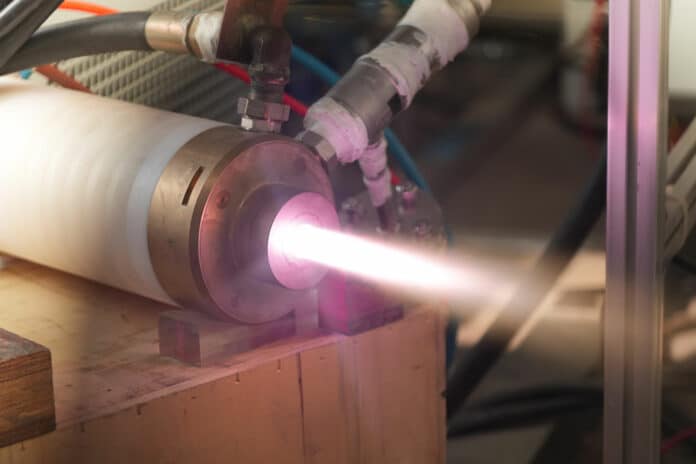A new design by Prof. Zhao Peng and the research team at Hefei Institutes of Physical Science (HFIPS) of the Chinese Academy of Sciences (CAS) has extended the operation time of the plasma torch from just a few days to several years. This breakthrough could have far-reaching implications for many fields and has resulted in the world’s longest-lasting plasma torch.
Plasma torches generate a constant flow of plasma, the fourth state of matter. This ionized gas is used to precisely cut electrically conductive materials. Typically, inert gases like helium, neon, and argon are used in plasma torches. The industry’s most common gas mixture is argon mixed with hydrogen, as it is cost-effective and produces the hottest flame and clearest cuts.
Plasma torches are quite useful in various industries as they can efficiently produce high-temperature plasma. They find application in low-carbon metallurgy, powder spheroidization, carbon material preparation, and advanced material spraying.
However, their limited lifespan has hindered their large-scale application. The conventional fixed cathodes need to be replaced upon depletion, resulting in short lifespans and high maintenance costs.
The research team led by Zhao Peng from the Hefei Institutes of Physical Science has found a simple and effective solution to the cathode depletion problem. They developed a continuous-feed cathode system that can rapidly replenish old and worn-out ones without interrupting the plasma torch. This could eliminate the limitation of lifespan and offer nearly limitless operational longevity of the plasma flame.
“The design overcomes five major hurdles,” said Senior Engineer LI Jun, who has been overseeing this experiment for 160 hours, “That includes electrical conductivity, thermal conductivity, sealing, water cooling, and continuous propulsion mechanism.“
“As for conventional plasma flame, 160 hours marks the end, but here it’s just the beginning,” he added.
This significant advancement propels the industrialization of plasma applications, ushering in a new era of efficiency and sustainability.
